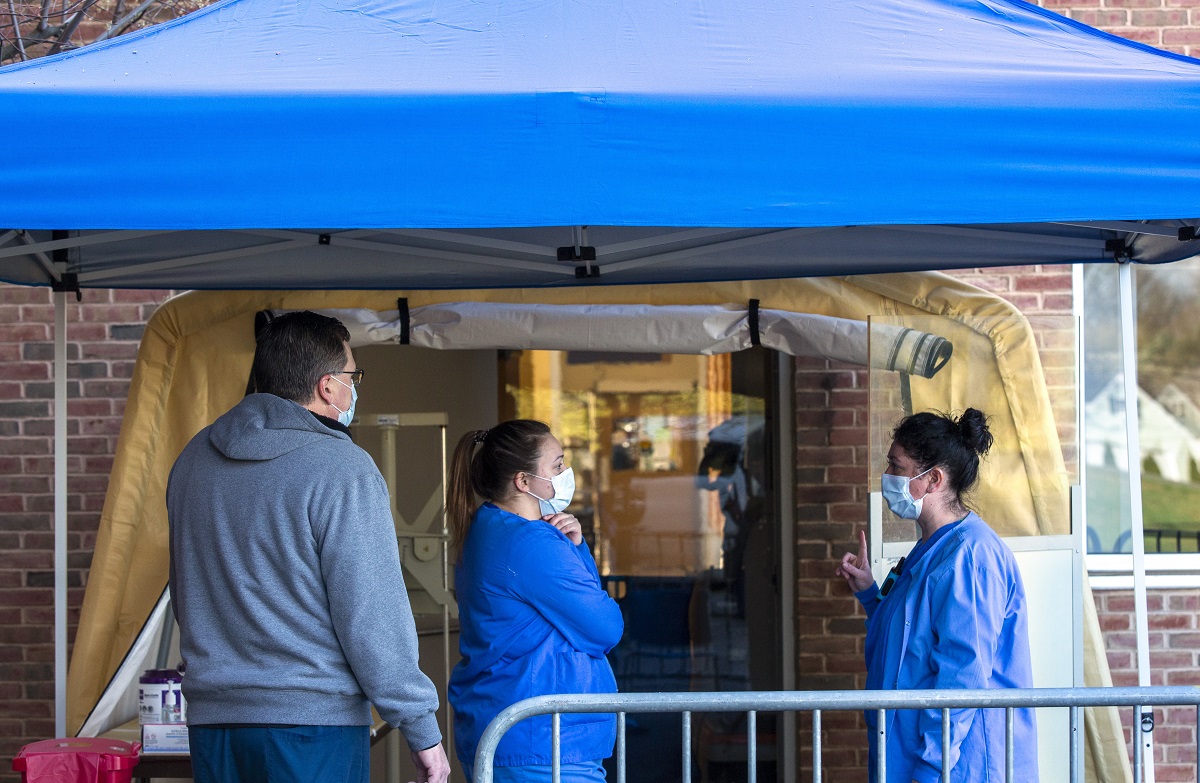Innovation in action: Hershey Medical Center open new radiology facility to safely image intermediate-risk patients

The COVID-19 pandemic has presented radiologists with some pressing problems. Penn State Health’s innovative solution — which included plexiglass, a nearby storage unit and some low-tech walkie-talkies — went from brainstorm to full implementation within three days with the opening of the new Radiology Annex at 35 Hope Drive, Hershey.
Penn State Health Radiology faced hurdles when imaging patients under suspicion for COVID-19 who needed chest X-rays. There was an added exposure risk to staff and non-COVID patients. Plus the time-consuming decontamination process that accompanies these moderate-risk patients had significantly reduced Radiology’s capabilities to image patients with a variety of other injuries or conditions.
“Our process is intended to isolate these patients as much as possible so that we don’t expose non-infected patients to patients with COVID-19,” said Dr. Timothy Mosher, chair of the Department of Radiology at Hershey Medical Center. “The new X-ray facility allows us to safely image a high volume of intermediate-risk patients.”
Located on the west side of the 35 Hope Drive building, the newly created Radiology Annex utilizes an exterior door into a storage area within the building. Plexiglass was bolted into place in the doorway to create a secure barrier between the patient and the flat panel detector that is positioned on the other side. With the outside area tented for privacy, a technician in full personal protective equipment guides patients to the exterior side of the plexiglass to have their chest X-ray taken with equipment on the other side.

Pete Shero, left, helps fellow radiologic technologists Natalie Conrad, right, and Katarina Kunkel set up the drive-through X-ray tent.
One unanticipated problem arose when the Radiology Annex imaged its first patient on April 3. The thickness of the plexiglass made it difficult for the technician on the outside to hear instructions from the technician operating the equipment on the inside. Security provided walkie-talkies so that, moving forward, patients can hear when to be still and hold their breath.
Chest X-rays are not sensitive or specific for COVID-19 pneumonia, and the American College of Radiology and the Centers for Disease Control and Prevention do not recommend using them as a diagnostic tool for the virus. The primary purpose for imaging intermediate-risk patients is to diagnose other causes of symptoms that may mimic COVID-19, such as bacterial community-acquired pneumonia, according to Mosher.
“For some patients with mild symptoms and imaging findings that can be seen in COVID-19 pneumonia, the chest radiograph may lead a provider to send that patient for viral testing for COVID-19,” said Mosher.
Patients will need an order for a one-view chest X-ray before they can be seen at the Radiology Annex. The X-ray process takes approximately 10 minutes from start to finish, and patients are sent home immediately following their imaging.
Radiology worked with staff in Health Physics, Infection Control, Facilities, Information Services and Security to create the Radiology Annex, which is open Monday through Friday, 8 a.m. to 4 p.m. Penn State Health is in the process of setting up a similar radiology clinic site at Lime Spring Outpatient Center to accommodate the large number of patients with acute respiratory symptoms in Lancaster County.
If you're having trouble accessing this content, or would like it in another format, please email Penn State Health Marketing & Communications.
